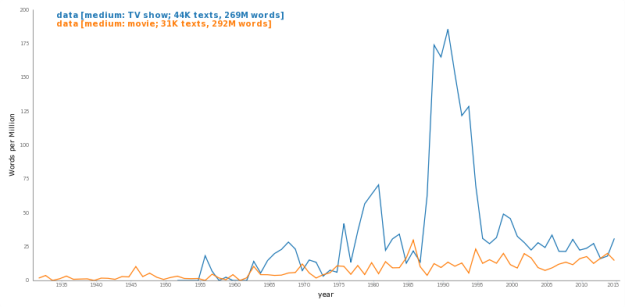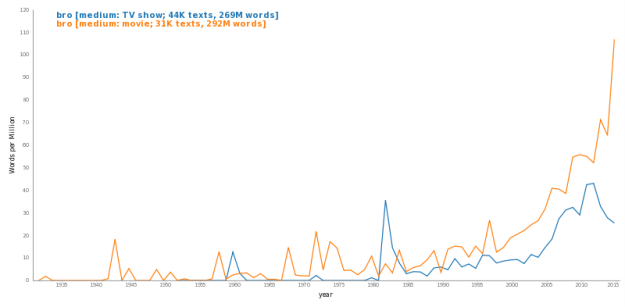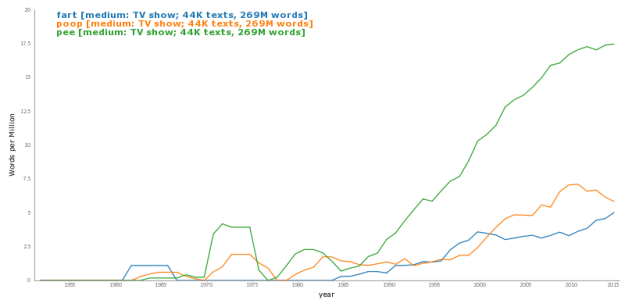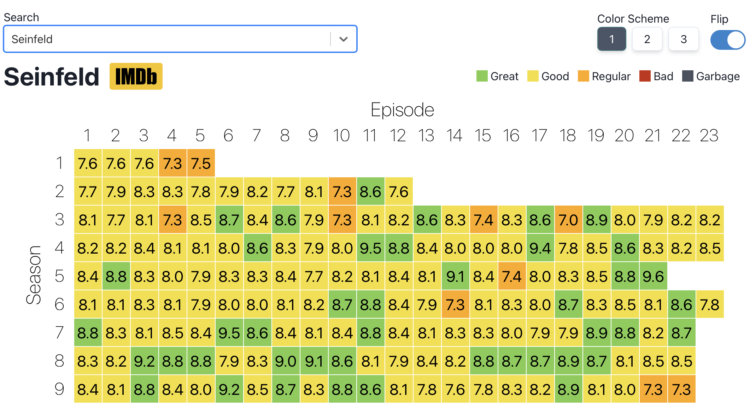
Movies and television shows often reflect cultural trends of the time they are made in. Even movies that take place during the past or future can say something about the present through metadata or production style. Benjamin Schmidt, an assistant professor of history at Northeastern University, provides a tool that lets you see trends in movie and television dialogue.
Made with the Bookworm platform, developed by Schmidt and a team at the Cultural Observatory, the tool lets you search for terms and it spits out relative usage over time. For example, above is word usage of "data" which saw a spike in the 1990s thanks to Star Trek: The Next Generation.
Here's the use of "bro."

And because I'm mature, here is the usage of "pee", "poop", and "fart", which like the above, appears to be on the rise.

The nice thing about the tool is that you can search by a lot of conditions. You can choose specific shows, genre, primary country, and other things. You can also change additional settings through the gear icon in the top right, such as time span and smoothing level. So there's lots of fun stuff to play with.
Have a search.
Tags: Bookworm, movies, television







